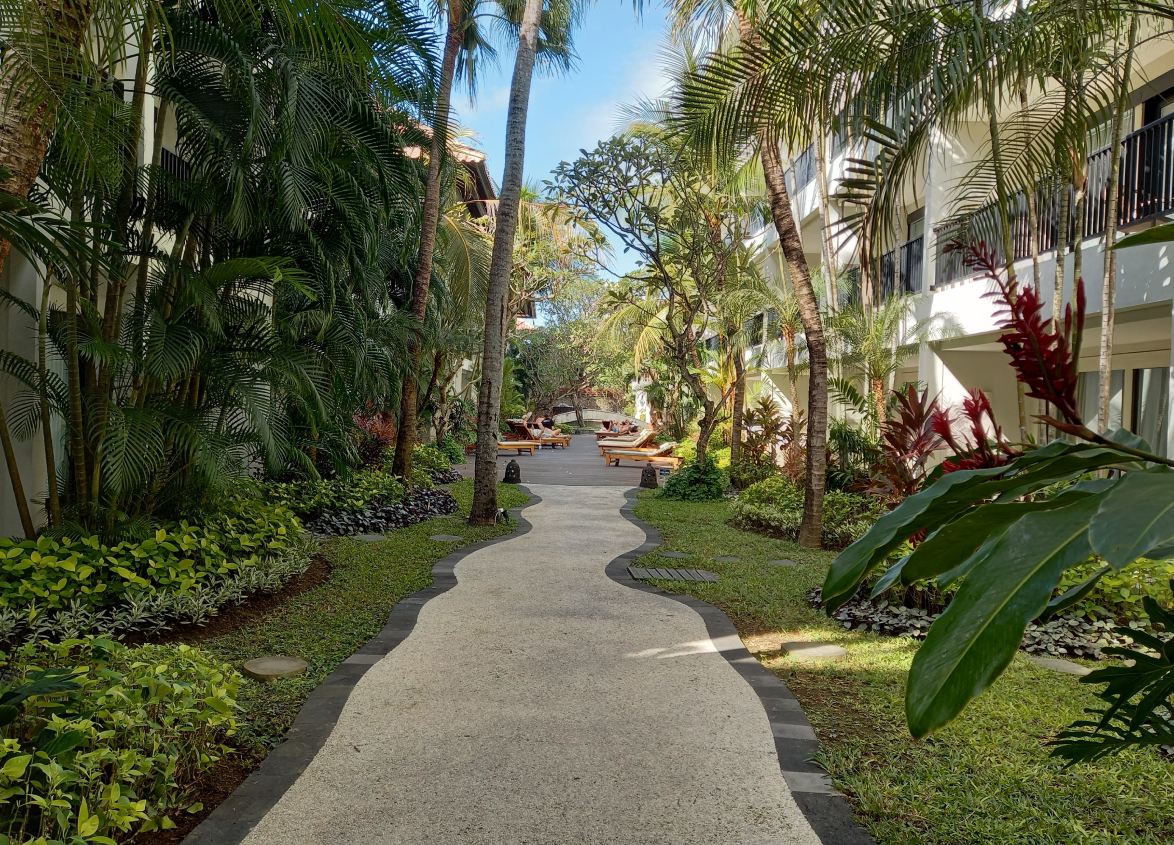
Retail
Maximising Foot Traffic: Innovative Marketing Strategies for Malls and Retail Centres
January 23, 2025
The behaviour of consumers has evolved with the help of technological facilitation and the emergence of e-commerce as driving factors that influence the dynamic environment of retail management. However, shopping malls and retail centres continue to attract customers in the present highly competitive market in terms of shopping, entertainment, and social interaction.
It is relevant and competitive to implement innovative marketing strategies for malls that attract foot traffic but at the same time deliver memorable experiences to the users. From retail marketing techniques that prioritise personalisation to immersive experiential marketing campaigns, the results depend on blending traditional with digital approaches.
This blog column talks about such strategies, providing actionable insights on how to boost customer engagement, tap into the power of technology, and measure success with efficacy.
Understanding Marketing Strategies for Malls
Marketing techniques for malls are essential in keeping and drawing new shoppers to these centres amid a burgeoning competitive retail environment. These encompassed innovative advertisements, improved technology, and customer focused schemes that went beyond turning malls into places for shopping.
Whether it is developing captivating promotions, designing customised events, or executing collaboration with both local and international brands, successful strategies are informed by the evolution in consumer behaviour. As a result, they enhance the overall shopping experience for the customer.
Defining Marketing Strategies for Malls
Marketing strategies for malls include the strategies and tactics which are planned with the intention of raising foot traffic, growing sales and enhancing loyalty to visitors. It is more than just marketing communication as such strategies are focused on the provision of additional market value – unique experiences that no other retail outlet would provide.
This calls for a variety of strategies to be put in place, including the use of information, in-person experiences and technology to meet the expectations of the consumer.
Key Components of Successful Retail Marketing Techniques
Customer-Centric Approach
In order to design and implement market strategies, the target markets have to be assessed. For example, family-oriented shopping centres would emphasise more activities for the children who accompany their parents, whereas those targeted at young professionals would focus more on modish brand outlets and upscale restaurant options. The data can be collected using surveys, focus groups, feedback forms, etc.
Seasonal Campaigns
Promotions targeted towards specific seasons are exciting and create a sense of urgency. There are experiences such as the Black Friday, Christmas holidays, or back to school offers that promote a lot of in-store activity. Every promotional period is characterised by the implementation of innovative thematic designs, discounts offered, and other certain activities which make the venue more enjoyable, unlike the usual busy times.
Community Engagement
The ability of the malls to perform optimally increases when there is a community setting. For instance, hosting charity drives, organising celebrations, or even allowing local artists to perform goes a long way in creating a favourable image among the people who have developed an attachment to the space.
Creative Branding
An extraordinary identity can make a mall memorable. Aimed at promoting a brand, this can include everything from a catchy phrase to a unique building, or advertising stories about the brand. This will forge an emotional connection with the customers, which makes them want to return.
The Power of Experiential Marketing
Experiential marketing is crucial in the current retail industry competition. The distinction between this type and conventional marketing is that the former actively puts customers in the picture whereas the latter takes a more passive approach.
It is experiential marketing that deepens relationships and creates the necessary hype and foot traffic for malls and retail centres. Making the shopping trip a gripping event will help malls retain the trust of the customers and also create a distinctive identity.
What is Experiential Marketing?
Experiential marketing focuses on the engagement of the customers through interactive, sensory and participatory events. It is not just about the transactional relationship of products or services. Rather, it is about making a deeper emotional connection that is more durable over time.
Experiential marketing makes a shopper feel as if involved in a particular story rather than being dormant.
Examples of Effective Experiential Marketing Campaigns
Immersive Installations
By introducing visually remarkable and reciprocating displays, it is possible to enhance the interaction of visitors with the surroundings of the mall. For example, life-size art pieces or projection mapping displays are great Instagrammable zones which encourage people to post pictures thus promoting the mall’s visibility online.
Event Spaces
The conducting of glamorous occasions such as fashion events, launch of new products or even meet-and-greet with famous celebrities is all it takes to turn a shopping centre into an entertaining facility. To a huge extent, it makes the place popular, attracting the crowd who make a visit to such events, looking for something out of the ordinary.
Virtual Reality (VR) Zones
The integration of VR within malls can provide advanced entertainment that will captivate the attention of young and modern-day shoppers. Visitors are taken on a virtual experience for internal gaming, virtual tours, or 3D walkthroughs of upcoming stores to keep visitors intrigued and entertained.
Pop-Up Cafes and Shops
Time-limited pop-ups that showcase a stylish brand or an alternative experience are always fun and hype-inducing. They could be the result of direct collaboration with local craftsmen or social media personalities, making them even more interesting for existing customers.
Seasonal Attractions
Organising special events helps sustain the interest of the visitors. These attractions not only improve the shopping experience at the mall, but also help in the positioning of the mall as a place where families come for festivities and entertainment.
Enhancing Customer Engagement
The enhancement of customer engagement levels is of utmost importance for the efficient implementation of strategies for malls and other retail complexes. In the present time with customers having unlimited choices available to them in case of both offline and online, engaging them in such a manner that they feel connected and appreciated.
Such customers are likely to stay longer and spend more in the mall, recommend it to their knowns and appreciate it, as well as become steady customers. Customer engagement is increasing the level of how audiences are attached to the business, from the ordinary and transactional to the emotional level.
Importance of Customer Engagement in Retail
A healthy customer engagement is imperative because it influences customer satisfaction, retention and revenue growth directly. When a customer is engaged, they feel contentment and tend to return more frequently, thus creating more foot traffic and more sales.
Engagement also helps in creation of trust and promotion of favourable word-of-mouth which is beneficial to the mall. For the malls, this means implementing policies such that all visitors are listened to and made to feel valued through personalised services, active participation and community involvement.
Innovative Customer Engagement Techniques
Once shopping becomes a pleasurable diversion, any establishment is guaranteed to get more attention from its customers. The participants go around the mall stamping their cards or scanning points for rewards in a game-like fashion. Gamification encourages visitors to explore more of the mall with excitement and fun.
Giving the customers the opportunity to voice their opinions instantaneously through means such as digital kiosks or mobile application surveys. Answering their feedback emphasises the importance of their contribution encouraging the goodwill towards the mall.
Holding such interactive events like contests, polls or a live question-and-answer session via social sites enables customers to stay engaged even in their absence at the mall. Furthermore, this encourages audience participation by requesting consumers to post their experiences in the mall on social media boosting visibility online.
Personalised Marketing
A mall has the ability to use insights gained from data to come up with marketing strategies that appeal to the liking of individuals. Let’s say a customer who often goes to buy clothing can be targeted with personalised emails or app notifications informing them about exclusive offers and discounts on apparels. Thus, this makes the customer feel important and valued.
Interactive Events
The engaging events like hosting a karaoke night, an art workshop, or a cooking class, tend to have quite a long staying effect and seek to encourage repeat visits. These encourage cohesiveness and enhance other offerings apart from shopping.
Omnichannel Touchpoints
Striving for a seamless connection between offline and online customer interactions, movement to omnichannel offers maximum convenience to the customers. Such features as a mobile application with an in-store guide, digital coupons that can be used during purchase.
Services in which customers buy products online and pick them up physically at the location also facilitate a positive shopping experience for the customers.
Gamification
Feedback Mechanisms
Social Media Engagement
Leveraging Digital Marketing for Retail
In this new media age, the application of digital marketing for retail has become a necessity for most malls and retail centres when trying to attract more customers. The majority of the shoppers will go online, looking for information before making any shopping decisions.
Therefore, regulating marketing activities by integrating digital marketing into their overall strategy. This approach allows them to target the right audience for their events, promotions, and services at the right time thereby filling up the gap between online searching with in-person shopping.
When effectively utilised digital channels, malls can facilitate greater visibility, foot traffic, and on-the-spot service provision for consumers.
Overview of Digital Marketing Strategies
Digital marketing strategies for malls range from creating awareness to traffic generation and creation of tailored experiences. These strategies use multiple forms of communication such as social media platforms, search engine optimisation, email promotions, and native advertising in order to comprehend and communicate with shoppers at different stages and points in time.
Through analysing metrics for various aspects of customer interactions and their preferences, campaigns for malls and shopping centres can be adjusted for maximum impact. Another benefit of digital marketing is the connecting both digital platforms and physical spaces to have an effortless transition between visitors.
Effective Digital Marketing Techniques for Malls
Geo-Targeted Ads
This approach entails the usage of geofencing and other location-based technology where a mall can aim its advertisements at customers located within a certain distance. For example, someone near a mall’s circumference might receive a push notification with information on a flash sale or an event in the mall encouraging them to make a visit.
Social Media Stories and Reels
With the same ease, malls can advertise on short video platforms like Instagram and Tiktok. Showing short, creative yet captivating videos welcomes hosting businesses. Such activities include posting behind the curtains, attending live events, or showing off new stores to create a stir among the customers.
Content Marketing
As part of content marketing, generating informative and interesting materials like blogs, videos, or infographics on what the mall has to offer will in turn lead to drawing attention and educating prospective visitors.
For instance, blogging on the “5 Must Visit Places While Holiday Shopping” gets more clicks to the mall’s site, which will eventually translate to more foot traffic to that area.
Chatbots and AI Assistants
Having chatbots and AI assistants on the website/app adds value to the customers by solving problems such as queries relating to store hours, promotions and offers, or directions. They can also suggest other products from the website by making use of AI tools based on the items the user has searched through browsing history.
Email Marketing
Sending timely updates through newsletters is a good way to inform customers about current or upcoming sales, events, or new store openings. Sending tailored email content to users, such as ‘Exclusive Discounts on Brands You Love,’ has a higher chance of being opened and increases traffic.
SEO-Optimised Website
A SEO-optimised website is paramount to the well-being of the shopping centre so as to rank high in search engine results to appear to potential customers looking for places to shop or activities in the nearby area. In addition, local SEO features such as ‘best malls near me’ help in targeting incredibly local customers nearby who are likely to go to the mall.
Influencer Partnerships
Establishing collaborations with local influencers provides malls an opportunity for enhanced promotion of their offerings leveraging the follower base. Such posts may contain information about the events, highlight the special offers or even showcase the stores, thus creating a stir and enhancing footfalls in the mall.
Loyalty Programs with App Integration
While digital loyalty programs available through a shopping mall’s application motivate individuals to make another visit to the mall. Modern customers will appreciate the ability to monitor reward systems, redeem points, and access special perks straight from their mobile devices which enhances value and convenience for them.
Implementing Integrated Marketing Strategies
In order to compete effectively, shopping malls and retail outlets must embrace integrated marketing strategies that completely blend traditional, digital, and experimental approaches into an integrated agenda.
The entire strategy is about focus on promoting the brand of an organisation through different channels and at all levels in order to provide the customer with a wholistic experience.
Creating a Cohesive Marketing Plan
A cohesive marketing strategy ensures that all the marketing activities are directed towards a common vision and set of goals. In other words, it integrates several communication methods including print, digital, social media and events into a single undertaking to present a consolidated message.
Steps to create a cohesive marketing plan:
- Set Clear Objectives: Identify key goals, including the growth in number of potential customers who visit, increasing revenue, or enhancing brand awareness.
- Gain Insights Of Your Target Audience: Split a big target market into groups of individuals with similar characteristics, tastes, and activities so that there is easy interaction between them.
- Choose the Right Channels: Employ a mix of channels such as social media networks, use of emails, putting up posters in the malls and organising the events for the intended audiences at different levels.
- Ensure Brand Consistency: Maintain uniform branding across all campaigns, including tone, visuals, and messaging, to create a strong, recognisable identity.
- Coordinate Timing and Content: Schedule campaigns strategically so they complement rather than compete with one another, creating a steady stream of engagement.
Utilising Data Analytics for Strategy Optimisation
The process of analysis gives room for the improvement of integrated marketing strategies by studying campaign performance and customer behaviour.
The primary points towards usage of data analytics are:
Customer Insights
- Examine the demographics, purchase records and online habits of the visitors in order to learn their tastes and preferences.
- Employ this information to develop offers and campaigns that are specific to each of the respective customer segments.
Campaign Performance
- Opt for click-through rates (CTR), foot traffic, sales, and other parameters to evaluate the effectiveness of the marketing campaigns.
- Find out which channels and campaigns have the highest engagement and direct more efforts in that particular area.
Event Success Metrics
- Assess the number of attendees, quality of feedback from customers, and expenditures made by customers on the day of the event and evaluate the success of the events.
- Use these evaluations to make the subsequent events more effective and attractive to the intended participants.
Predictive Analytics
- Employ data from the past in order to make projections on the course of events in the future, for instance, the most likely moments for shopping or types of products that will generate more sales.
- Align these campaigns with the forecasts so as to achieve maximum efficacy.
Real-Time Feedback
- Utilise channels such as social media metrics, in-app feedback or surveys, and electronic interfaces to instantly obtain opinions of the customers on their experiences.
- Modify any campaigns or promotions right away based on this input for higher satisfaction levels among customers.
ROI Tracking
- Determine the return on investment (ROI) for every marketing campaign by assessing the costs in relation to the benefits achieved.
- Prioritise attention to feasible, effective strategies to ensure the essence of resource management.
Measuring Success and ROI
Shopping malls and retail complexes should implement monitoring and performance measurement systems for return on investment (ROI) from their marketing initiatives. This is because, through assignment, it becomes possible to track the effectiveness of marketing efforts over time.
The use of appropriate metrics along with tools allows the malls to assess not only the immediate tangible benefits but also the prospects for further development and optimisation of campaigns to forecasting better results.
In order to promote business growth that can be maintained over time, it is important to measure success and ROI, as this gives an understanding of what is successful and what requires some change.
Key Performance Indicators (KPIs) for Marketing Success
To measure the effectivity of marketing strategies for malls, use these KPIs:
| KPI | What It Measures | Why It Matters |
|---|---|---|
| Foot Traffic | Number of visitors to the mall | Indicates popularity and reach |
| Dwell Time | Average time spent per visitor | Reflects customer engagement |
| Sales Per Visit | Revenue generated per shopper | Highlights spending behavior |
| Social Media Engagement | Likes, shares, and comments on campaigns | Tracks brand visibility and interaction |
| Email Open Rates | Percentage of recipients opening emails | Gauges campaign interest |
Calculating ROI of Marketing Campaigns
Determining the ROI (return on investment) for marketing campaigns undertaken by malls assists them in determining whether the amount spent on marketing activities has been compensated for by foot traffic, revenues, or any other outcomes that the mall hopes to achieve.
Calculating ROI is pertinent in decision-making processes concerning campaign resource allocation that is effective in implementing budgets and plans of action.
- ROI Formula:
ROI (%) = [(Revenue Generated – Campaign Cost) / Campaign Cost] × 100 - Monitor how much has been paid for advertisements vs how much there has been a change in foot traffic.
- Align event expenditures with retailer sales data from the period following the event.
Conclusion
Given the current climate of ever-increasing customer anticipation, malls, and retail centres, in general, should go beyond simple shopping stoppages. Through the use of inventive and imaginative marketing activities, they can rebrand themselves as lifestyle centres that offer value, interaction, and fun.
Whether through experiential marketing, personalised customer engagement, or data-driven digital marketing for retail, the aim is to create a unified experience that matches with shoppers. This is achieved by first identifying what the customer needs, trying out new concepts in practice and then working on basic aspects only to make them better and better with time.
While malls are embracing such contemporary strategies, it does not only focus on increasing the number of visitors to the malls but also creates a bond with society, which is pertinent in the sustainability of the retail industry.
FAQ's
1. What are the most effective marketing strategies for malls?
A mix of experiential marketing, loyalty programs, and digital marketing for retail tailored to the target audience.
2. How can experiential marketing improve customer experiences?
By creating interactive, memorable events that strengthen emotional connections with shoppers.
3. What role does digital marketing play in retail success?
It amplifies reach, targets specific demographics, and drives in-person visits through online platforms.
4. How can I measure customer engagement in my retail centre?
Use KPIs like foot traffic, dwell time, and social media interactions.
5. What are some examples of successful marketing campaigns in malls?
Seasonal festivals, AR-driven interactive displays, and influencer-hosted shopping events.
MUST READ
Looking for something specific?
We'd be delighted to help you.





























































































































































































































































































































































































